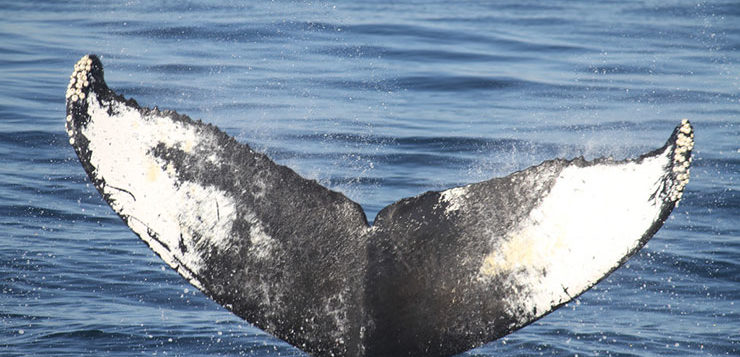The fight by big miners to keep burning coal is even impacting on our oceans, writes Erin Foster.
This week, dangerous seismic testing is occurring just off Victoria’s coastline along the pristine 90 Mile Beach at Golden Beach. The seismic survey, funded by the state and federal governments, is being conducted to determine if the area is suitable for carbon capture and storage (CCS), threatening marine biodiversity in the region and impacting local businesses.
Seismic testing is conducted in order to gather data on the geological formations on the ocean bed. It consists of a sonic gun being set off beneath the surface of the ocean approximately every 8 seconds. In this case, the testing is occurring between 800m and 7 kilometres offshore for 17 days. According to Greenpeace Australia the level of sound transmitted through seismic testing can be up to 259 decibels per blast – enough to kill a human.
Seismic testing has been used for almost 30 years predominantly by the gas and oil industries. Locals in the Golden Beach area were informed at a poorly advertised information session that this wouldn’t impact the pristine marine environment, except possible interference with the migratory patterns of whales and dolphins. This was to be prevented by a ‘qualified spotter’ on board the seismic testing boat. When contacted, Carbon Net was unable to confirm that the spotter on board would be independent from the project.
Upon further research, it is clear that the project team has downplayed the environmental impact of the testing significantly.
In 2012, the United Nations Environment Program published a synthesis outlining the impact of underwater noise on marine and coastal biodiversity and habitats. It notes that in scientific studies to date have found that “at least 55 marine species (cetaceans, teleost fish, marine turtles and invertebreas)” are negatively impacted by anthropogenic noise.
Impacts on these species recorded to date include the masking of important acoustic cues, complete avoidance of the area leading to marine displacement and in some cases physical injury and death.
The study also notes that the true effect of activities such as seismic testing is largely unknown due to inadequate research, meaning that the consequences of such activities could be significantly more detrimental than current research indicates.
The Government-backed project to date has failed to engage with local community stakeholders or the broader population. Information provided has reportedly been over complicated, inaccessible and occasionally inaccurate.
For example, when asked directly what impact the testing would have on marine life in the area, project representatives assured members of the community that there would be little to no impact and that the fish ‘might just go away for a while.’
This is a direct contradiction of UNEP research, creating mistrust and anger in the local communities impacted by the testing.
In a country where natural resources are plentiful and renewable energy sources continue to increase in efficiency and decrease in cost, why would we risk harming the natural environment to save coal?
By May 2017, the Australian government has spent $108 million on the Carbon Net project. At a recent information session, a Carbon Net representative communicated to community members that it would take at least 10 years for the technology to be developed. How’s that for value for money?
Interestingly, in a letter to the editor (The Age, 20/1/2018) written by the Minister for the Environment and Energy Josh, Frydenberg the money pit that is CCS didn’t warrant a passing comment, and why would it?
According to him we’ll “overachieve our 2020 [emissions]target by 294 million tonnes”. If this is in fact true, why are we investing so much money and risking our environment for the sake of CCS?
Donate To New Matilda
New Matilda is a small, independent media outlet. We survive through reader contributions, and never losing a lawsuit. If you got something from this article, giving something back helps us to continue speaking truth to power. Every little bit counts.




